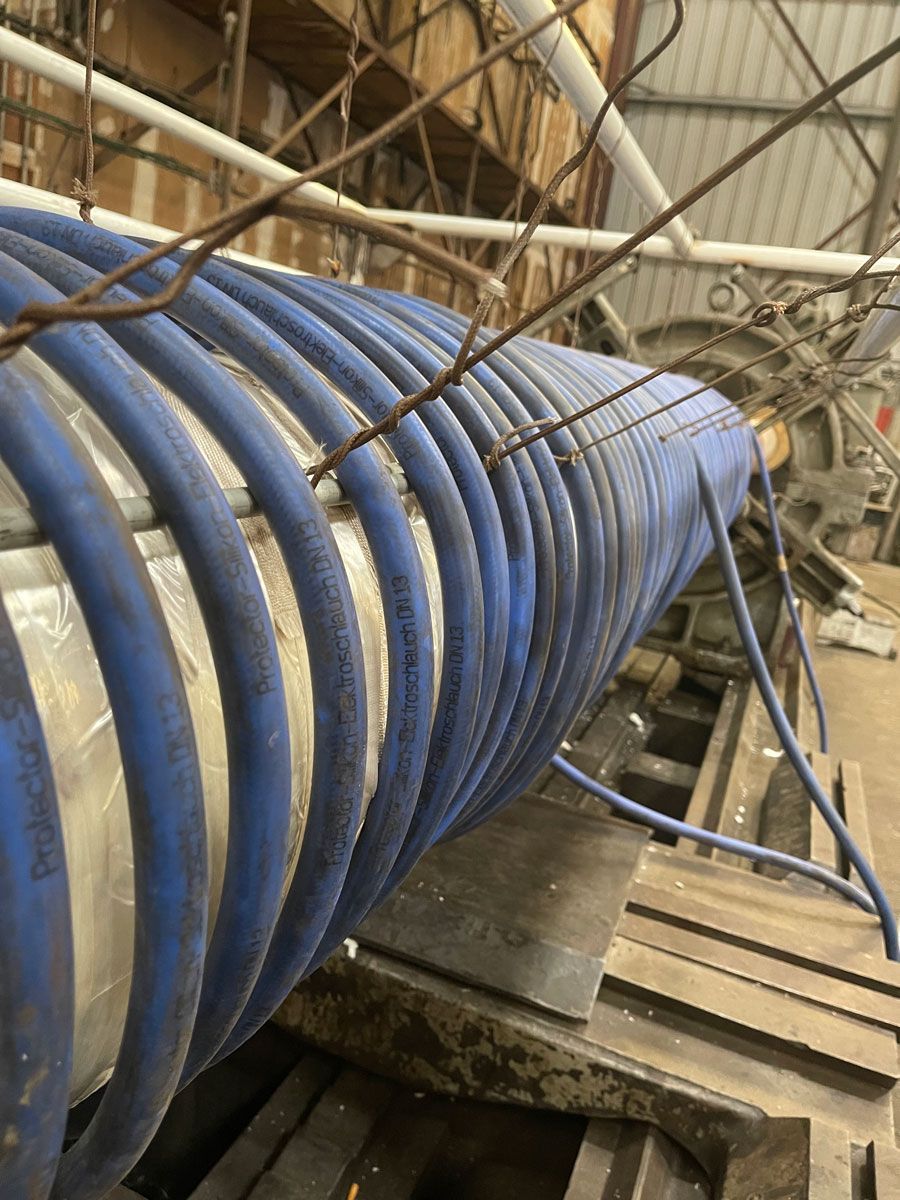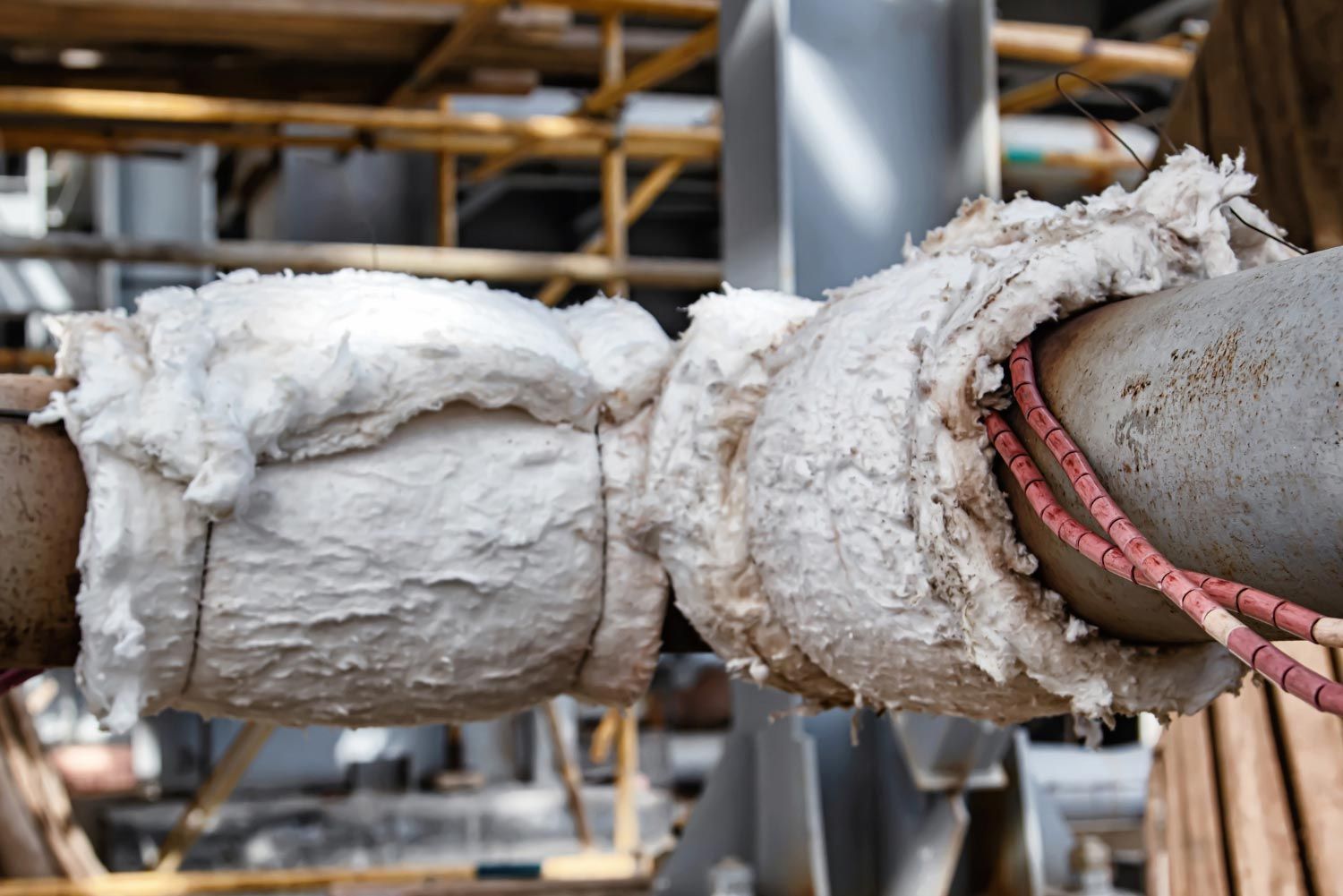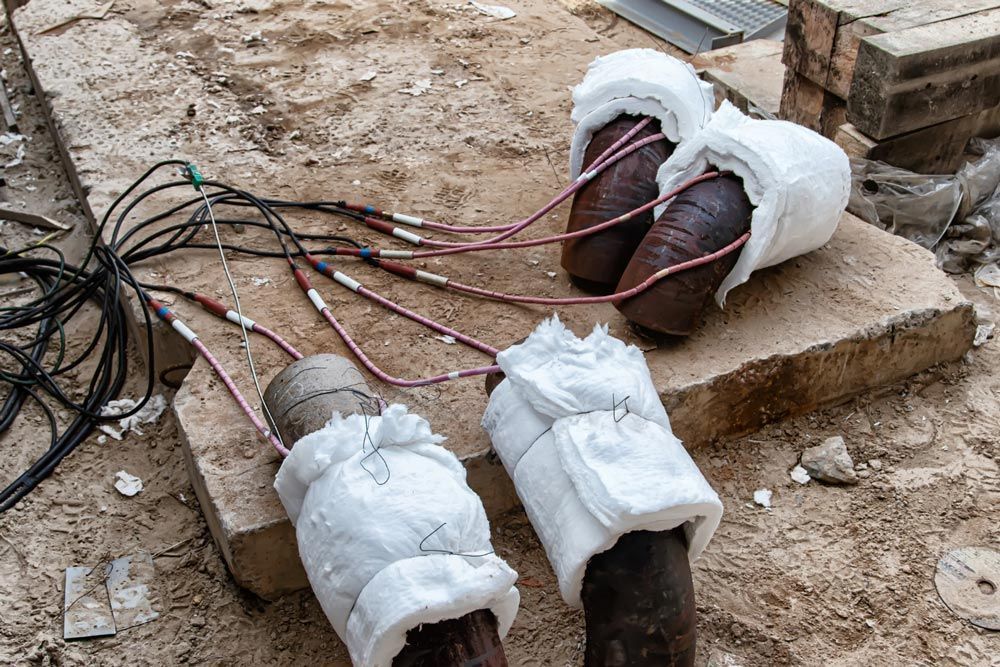4 Main Types of Heat Treatment Processes You Should Know
Onsite USA • August 31, 2025
Heat treatment is a critical process in metalworking and manufacturing, designed to alter the physical and mechanical properties of metals without changing their shape. By applying controlled heating and cooling cycles, heat treatment improves properties such as hardness, strength, toughness, and ductility, making metals suitable for specific industrial applications. Understanding the main types of heat treatment processes is essential for engineers, machinists, and manufacturers aiming to optimize material performance.
In this article, we will explore the 4 main types of heat treatment processes: annealing, quenching, tempering, and normalizing, discussing their purposes, methods, and applications.
1. Annealing
Annealing is a heat treatment process aimed at softening metal, improving ductility, and relieving internal stresses. It involves heating the metal to a specific temperature, maintaining it for a period, and then cooling it slowly, usually in a furnace.
Purpose of Annealing
- Reduce hardness and improve machinability.
- Relieve residual stresses caused by prior mechanical or thermal processes.
- Refine the grain structure for better ductility.
- Enhance electrical conductivity in certain metals like copper and aluminum.
Annealing Process Steps:
- Heating: The metal is heated uniformly to a temperature where recrystallization can occur.
- Soaking: The material is held at this temperature to allow structural changes.
- Cooling: Controlled slow cooling prevents brittleness and encourages uniform grain structure.
Applications of Annealing:
- Automotive parts like gears and shafts.
- Electrical components where conductivity is critical.
- Tools and dies requiring high ductility before further machining.
2. Quenching
Quenching is the process of rapidly cooling a metal after heating, typically by immersing it in water, oil, or specialized quenching solutions. This process increases hardness and strength but may make the metal more brittle if not followed by tempering.
Purpose of Quenching:
- Increase hardness and wear resistance.
- Improve strength for high-stress applications.
- Prepare steel for further heat treatments like tempering.
Quenching Process Steps:
- Heating: The metal is heated to its critical temperature (usually above its transformation temperature).
- Rapid Cooling: The material is plunged into a quenching medium to lock in a harder structure.
- Post-Quench Treatment: Sometimes, tempering is required to reduce brittleness.
Common Quenching Methods:
- Water Quenching: Fastest cooling, high hardness, but high risk of cracking.
- Oil Quenching: Slower than water, reduces risk of cracking, used for alloy steels.
- Air or Gas Quenching: Controlled cooling for special steel grades or large parts.
Applications of Quenching:
- Cutting tools like drills, saws, and knives.
- Automotive components such as camshafts and crankshafts.
- Industrial machinery parts are exposed to high wear.
3. Tempering
Tempering is typically performed after quenching to reduce brittleness and relieve internal stresses while retaining much of the metal’s hardness. It involves heating the quenched metal to a temperature below its critical point and then cooling it at a controlled rate.
Purpose of Tempering:
- Reduce brittleness from quenching.
- Improve toughness and flexibility.
- Stabilize internal stresses in hardened metals.
Tempering Process Steps:
- Heating: The quenched metal is heated to a moderate temperature, usually between 150°C and 650°C (300°F–1200°F).
- Soaking: The metal is held at this temperature to allow stress relaxation and microstructural adjustments.
- Cooling: Usually air cooling is sufficient, depending on the alloy and desired properties.
Applications of Tempering:
- Springs and suspension components in vehicles.
- Cutting tools like chisels and knives to balance hardness and toughness.
- Machine components require both strength and flexibility.
4. Normalizing
Normalizing is a heat treatment process that refines the grain structure, improves mechanical properties, and reduces internal stresses, similar to annealing but with faster cooling. Normalized metals are stronger and harder than annealed metals but still retain good ductility.
Purpose of Normalizing:
- Improve strength and hardness.
- Refine grain structure for uniform mechanical properties.
- Relieve residual stresses after forging or casting.
Normalizing Process Steps:
- Heating: The metal is heated to a temperature above its transformation range.
- Soaking: Held at this temperature to achieve uniform internal temperature.
- Air Cooling: The metal is allowed to cool in still air, faster than annealing.
Applications of Normalizing:
- Structural steel components like beams and channels.
- Forged parts require improved toughness
- Automotive and railway components needing uniform mechanical properties.
Why Heat Treatment Matters
Proper heat treatment ensures metals perform as intended in demanding applications. Selecting the right heat treatment depends on:
- Material type: Steel, aluminum, and copper alloys respond differently.
- Required properties: Hardness, strength, ductility, or wear resistance.
- Final application: Automotive, aerospace, construction, or toolmaking.
Common Industries Using Heat Treatment:
- Automotive and aerospace engineering.
- Tool and die manufacturing.
- Construction and infrastructure.
- Electronics and electrical industries.
Tips for Optimizing Heat Treatment
- Know Your Material: Different alloys require precise temperature ranges for optimal results.
- Control Cooling Rates: Cooling too fast or slow can cause cracking, warping, or undesired microstructures.
- Combine Processes: Often, a combination of quenching and tempering is needed for balanced properties.
- Use Professional Equipment: Industrial furnaces, quenching tanks, and monitoring systems ensure consistency.
- Regular Testing: Hardness testing, microstructure analysis, and stress testing verify results.
Final Thought
Understanding the 4 main types of heat treatment processes annealing, quenching, tempering, and normalizing is essential for anyone involved in metalworking, manufacturing, or engineering. Each process has its unique benefits and applications, and choosing the right method depends on the material and intended use. Proper heat treatment improves durability, performance, and lifespan of metal components, ensuring they meet rigorous industrial standards.
By mastering these processes, manufacturers can produce stronger, more reliable products while avoiding costly failures due to improper material treatment.
Frequently Asked Questions
What is the main difference between annealing and normalizing?
Annealing and normalizing are both heat treatment processes, but they serve different purposes. Annealing involves slow cooling of the metal to soften it, relieve internal stresses, and improve machinability. In contrast, normalizing uses air cooling after heating, which is faster and results in improved strength and a more uniform grain structure.
Can quenching make metal brittle?
Yes, quenching can make metal brittle. This process involves rapid cooling, usually in water, oil, or air, which increases hardness. However, the rapid cooling can also cause the metal to become brittle if it is not followed by tempering, which balances hardness and toughness.
Why is tempering done after quenching?
Tempering is performed after quenching to reduce the brittleness that quenching can cause. It involves reheating the metal to a lower temperature and then cooling it at a controlled rate. This process retains much of the hardness gained from quenching while improving ductility and toughness, making the metal safer and more reliable for practical applications.
Which metals can undergo heat treatment?
Most steels, aluminum alloys, copper alloys, and tool steels can undergo heat treatment. Each metal has specific temperature ranges, cooling methods, and processing requirements that must be followed to achieve the desired mechanical properties, such as hardness, strength, or toughness.
How does heat treatment affect the lifespan of a metal part?
Proper heat treatment can significantly extend the lifespan of metal parts. By improving hardness, strength, and toughness, heat-treated metals resist wear, fatigue, and deformation more effectively. This ensures that components perform reliably over time and reduces the likelihood of premature failure in critical applications.





